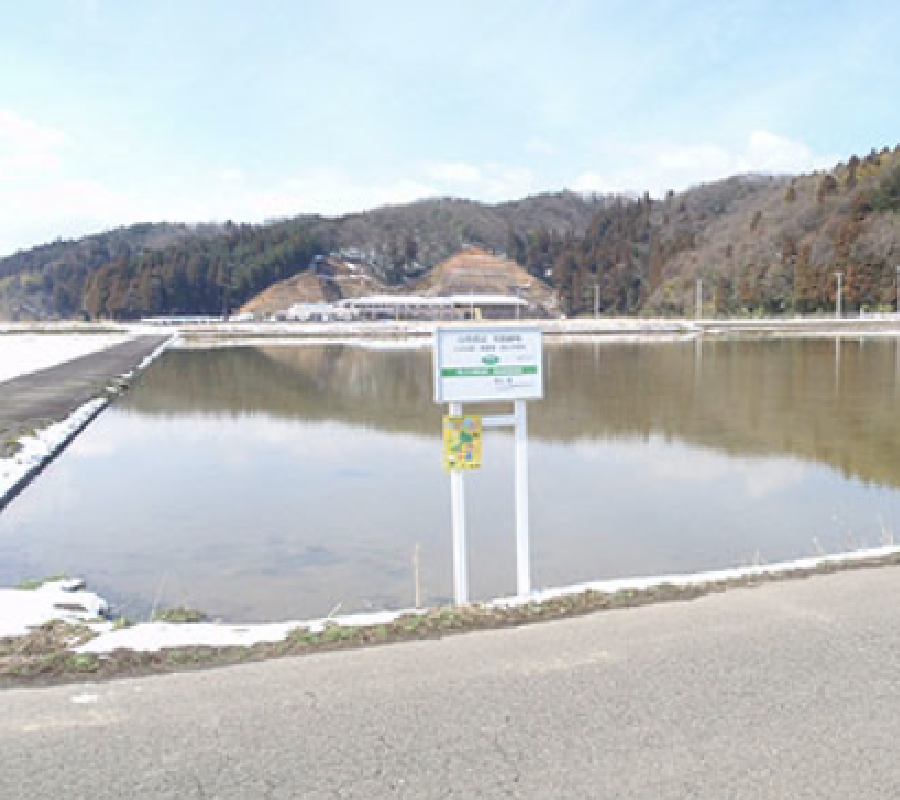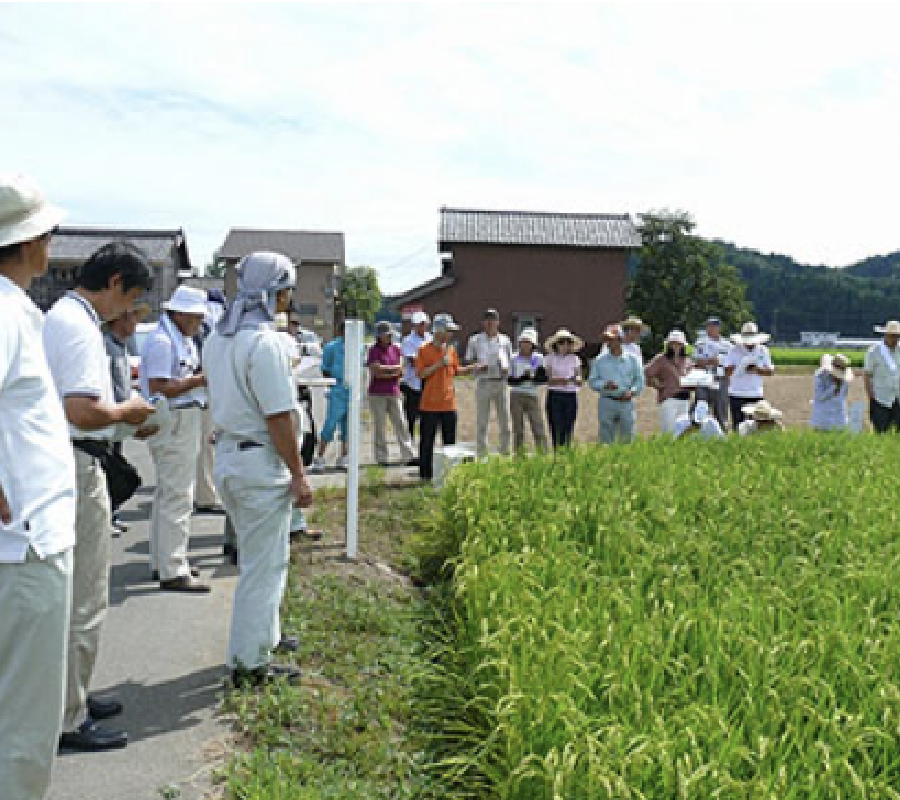Interview from 2011
Fukui – Kiyoshi Nakagawa
We asked Mr. Nakagawa for his thoughts on organic farming and BIOTREX analysis.
Q. The microbial performance index of your soil is one of the top five results among rice farmers in Japan. How do you feel about this result?
I was very surprised because I didn’t expect such a high result. While I’ve always believed that I was doing reasonably well, I anticipated achieving average figures. Seeing my efforts validated through numerical evidence brings me great joy.

A plate with the BIOTREX analysis results of Mr. Kiyoshi Nakagawa’s rice fields. 2,163,260 is a very high value of Microbial Performance Index.
Q. What exactly have you been doing?
We’ve been practicing organic farming for approximately 20 years and we’ve received organic JAS certification in the year 2000. Currently, I entrust overall management to my successor, while my partner and I share the actual agricultural work.
During these two decades, I’ve been particularly attentive to winter management. My rice paddies are situated on flat land where winter irrigation can be inconvenient. The total area is approximately 2 hectares. With understanding from neighboring farmers, we’ve been supplying water even during the winter months, practicing winter rice cultivation. Previously, we would perform periodic field preparation during winter, covering the surface with bokashi to protect against the cold.
As for the bokashi, I’ve been producing it myself. The fundamental concept is to avoid importing external materials like cow manure and instead return byproducts from my own fields back to the paddies. Ingredients for the bokashi include rice straw, chaff, rice bran, and even soybean meal.
Q. Please share your thoughts on adopting organic farming.
I place utmost importance on building trust with consumers. Without their support, it would be impossible to sustain organic farming. The rice I produce is directly sold to 50–60 consumers, and the rest is available at local farmers’ markets. For those living nearby (around 10–15 consumers), I personally deliver the rice, engaging in direct conversations to deepen our connections.
For customers in distant locations such as Tokyo, Kobe, and Kyoto, we use external delivery service. Additionally, I operate a direct sales store with a colleague where I also sell products and engage with customers who visit the store.
We sell rice for JPY550 per kg, but considering the costs, we really want to sell it at a higher price. Thanks to subsidies, I allocate half of the funds back to consumers, thus keeping the selling price reasonable.
On my fields, we refrain from using herbicides, allowing snails to thrive. Occasionally, the rice may exhibit spots, but I assure consumers that these are signs of safety and reliability.

The winter irrigation rice fields were established in 2009.

Mr. Nakagawa explaining about environmentally friendly rice paddies at a workshop (orange shirt).
Q. What do you expect to get out of BIOTREX analysis?
After conducting a BIOTREX analysis, we received a soil mark sticker from DGC technology, which we then placed on the rice before delivering it to consumers. Some consumers have shown interest in the sticker and have asked questions. In such cases, we inform them about the DGC technology’s website. Furthermore, customers who have become aware of the excellent quality of my crops are reconsidering the organic farming methods that I have employed.
Looking ahead, I hope that this analytical method will expand from individual data points to regional patterns. Some agricultural cooperatives set a standard for taste and purchase products that exceed it at a higher price. I trust that the BIOTREX analysis will become one of the indicators.

